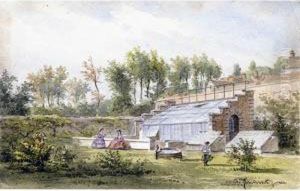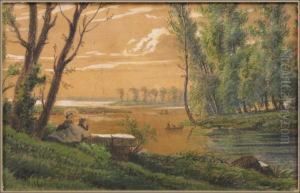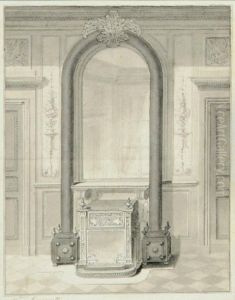Charles Ransonnette Paintings
Charles Ransonnette was a French artist, lithographer, and draftsman, known for his architectural prints and landscape drawings. Born in 1806, he lived during a period in which France underwent significant political and cultural transformations, including the fall of Napoleon's empire, the restoration of the monarchy, the July Monarchy, the Second Republic, and the establishment of the Second Empire under Napoleon III.
Ransonnette's work is characterized by its detailed representation of buildings and urban scenes, reflecting the changing face of Paris and other French cities during the 19th century. His lithographs serve as valuable historical records of the urban landscape before and during the extensive renovations carried out by Baron Haussmann, which dramatically transformed Paris.
He was also known to have produced a variety of works that include interior scenes, landscapes, and genre scenes. Ransonnette's lithographs were often published in books and journals, making them accessible to a wide audience. His technical skill in lithography, which was a relatively new printmaking technique at the time, contributed to his reputation.
Despite his contributions to architectural lithography and his documentation of the urban transformation in France, Ransonnette is not as widely remembered as some of his contemporaries. Nevertheless, his prints can be found in the collections of various museums and have been studied by historians interested in the visual culture of 19th-century France.
Charles Ransonnette passed away in 1877, leaving behind a body of work that continues to be of interest to art historians, particularly those specializing in the study of lithography and urban history.


